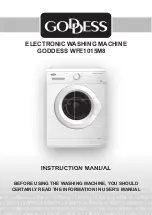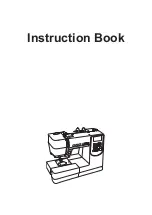
PULSAR
®
PLUS 55-S SUCTION BLAST CABINET
Page 13
© 2021 CLEMCO INDUSTRIES CORP.
www.clemcoindustries.com
Manual No. 30423
4.5
Blasting Operation
To avoid the inhalation of dust, which can
cause respiratory illness from short-term
ingestion or death from long-term ingestion:
Use the blow-off nozzle to blow media off
parts before opening doors.
After blasting, keep doors closed and the
exhauster running until the cabinet is clear
of all airborne dust.
Always close cabinet, reclaimer, and dust-
collector doors before blasting. Keep all
doors closed during blasting.
Always wear blast gloves.
Stop blasting immediately if dust leaks are
detected. Refer to troubleshooting
Sections 8.15 and 8.16 and identify source
of leak.
4.5.1
Slowly open the air-supply valve to pressurize
the air-supply line. Listen for leaks. If any are noted, shut
off the air supply and identify and correct the leak(s).
Check for air leaks on the initial startup and periodically
thereafter.
4.5.2
After the filter cartridge is seasoned, per Section
7.13, refer to Section 5.8 and adjust the pulse-pressure
regulator to 60 psi.
4.5.3
Turn ON lights and exhauster. The green
pushbutton START switch performs both functions.
4.5.4
Load parts. If parts are oily or greasy, degrease
and dry them prior to blasting.
4.5.5
Close door; the door interlock system prevents
blasting if either door is open.
4.5.6
Adjust the pilot pressure regulator to the
required blast pressure, per Section 5.1. The blast-
pressure regulator knob is located on the upper right
side of the cabinet’s control console, as shown in
Figure 13.
4.5.7
Insert hands into rubber gloves.
4.5.8
To blast, hold the gun firmly, point the gun
toward the object to be blasted, and apply pressure to
the top of the foot pedal; blasting begins immediately.
Shut down the cabinet immediately if dust
discharges from the dust collector or cabinet.
Check to make sure the dust-collector filter
cartridge is correctly seated and that it is not
worn or otherwise damaged. Prolonged breathing
of any dust can result in serious lung disease.
Short-term ingestion of toxic dust, such as lead
or heavy metals, poses an immediate danger to
health. Toxicity and health risk vary with type of
media and dust generated by blasting. Identify
all material being removed by blasting and obtain
a safety data sheet (SDS) for the blast media.
4.5.9
When blasting small parts, place an appropriately
sized screen over the grate to prevent parts from falling
into the hopper. If an object should fall through the grate,
stop blasting immediately and retrieve it.
To prevent rapid frosting of the view window,
install a view-window cover lens, per Section
7.4, and avoid pointing the blast nozzle toward
the view window
4.5.10
When blasting parts off the grate, use a solid
conductive back rest to support the part. Without this
assist, especially with longer blasting operations, the
operator will tire easily from resisting blast pressure, and
static electricity could build up in the ungrounded part
and cause static shocks. Whenever possible, avoid
holding small parts that require blasting into the glove.
4.6
Blasting Technique
4.6.1
Blasting technique is similar to spray painting
technique. Smooth, continuous strokes are usually most
effective. The distance from the part affects size of blast
pattern. Under normal conditions, hold the gun
approximately 3" to 6" from the surface of the part.
4.7
Stop Blasting
4.7.1
To stop blasting, remove foot pressure from the
top of the foot pedal.
4.7.2
Use the blow-off nozzle to blow media off
cleaned parts. To operate the blow-off nozzle, hold the
nozzle securely, point the nozzle toward the blow-off
item, and bend the end the nozzle to activate the blow-
off. Release the nozzle to shut off the blow-off.















































